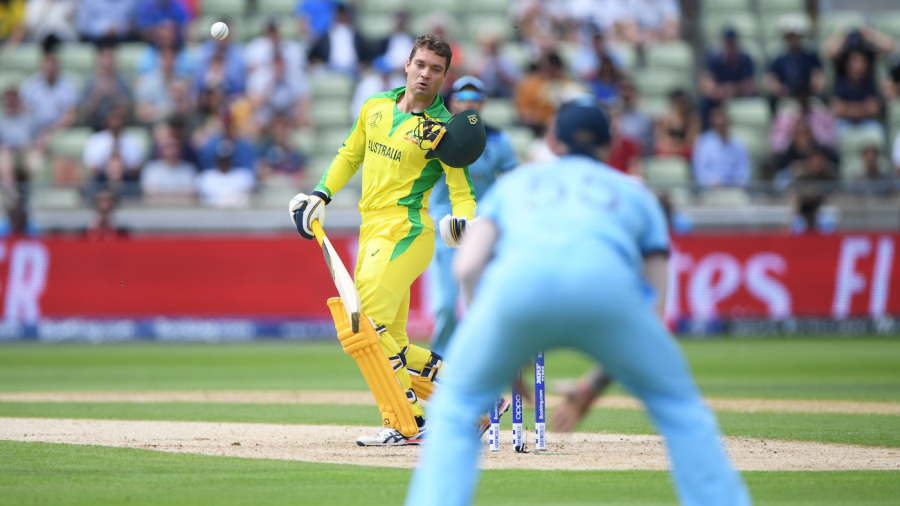
The ECB are hopeful that a tweak to their playing regulations for this season’s County Championship may prompt a change to the game’s laws, after it was deemed that batsmen will remain not out if any part of their helmet falls on the stumps and breaks the wicket.
The measure, which was also included for last season’s Bob Willis Trophy fixtures but did not come to pass during the competition, will apply to all ECB competitions this summer, and is aimed at ensuring that all players wear the maximum available protection – including parts such as the more recently introduced stem guards at the back of the helmet, that are liable to be dislodged when struck by a ball.
The issue of player safety shot to prominence in November 2014, when the Australian batsman Phillip Hughes was struck on the back of the neck while batting in a Sheffield Shield fixture at Sydney, and died two days later of a brain haemorrhage.
Twelve months after that tragedy, the ECB stipulated that all professional cricketers in England and Wales would be required to wear helmets while batting or fielding close to the wicket.
And according to Alan Fordham, the ECB’s operations manager, the regulations tweak is a logical progression from that requirement.
“If a batsman’s helmet becomes dislodged, or a part of it becomes dislodged – most likely its neck protection – and breaks the wicket, the batsman would be protected by the regulation change,” Fordham said.
“If we were playing purely by law, then that would be out, but we are protecting the batsman and that arises from the fact that it’s mandated that you need to wear a helmet, and we want to encourage as much protection for batsmen as possible.”
Incidents of batsmen being dismissed in such a manner are rare, but far from unheard of. Kevin Pietersen was out hit wicket to Dwayne Bravo at Old Trafford in 2007 when a bouncer broke his chin-strap and caused his helmet to land on the stumps.
More recently, Australia’s Alex Carey narrowly avoided the same fate in the World Cup semi-final against England in 2019, when he caught his helmet after being struck on the jaw by Jofra Archer.
According to MCC’s most recent revision of the Laws of Cricket in April 2019, Law 29.1.1.4 states that a wicket is put down … “by the striker’s person or by any part of his/her clothing or equipment becoming detached from his/her person.”
The ECB’s playing regulations have added a caveat to that wording: “However, any detached equipment shall not include the striker’s protective helmet, or any part thereof [that is] designed to protect the head, neck and/or the face.”
“For the purposes of interpreting these Laws of Cricket,” the appendix to the regulation continues, “such a description will include faceguards, grilles and neck guards.”
Fordham, who also sits on the MCC laws sub-committee, said that the matter had been raised in recent meetings, and that he anticipated an universal adoption of the policy in due course.
“Its status at the moment is it isn’t law,” he said. “It may become law but that will be an MCC decision, but we’ve cracked on with it because we think it’s the right thing to do.”
Andrew Miller is UK editor of ESPNcricinfo. @miller_cricket
©
ESPN Sports Media Ltd.
